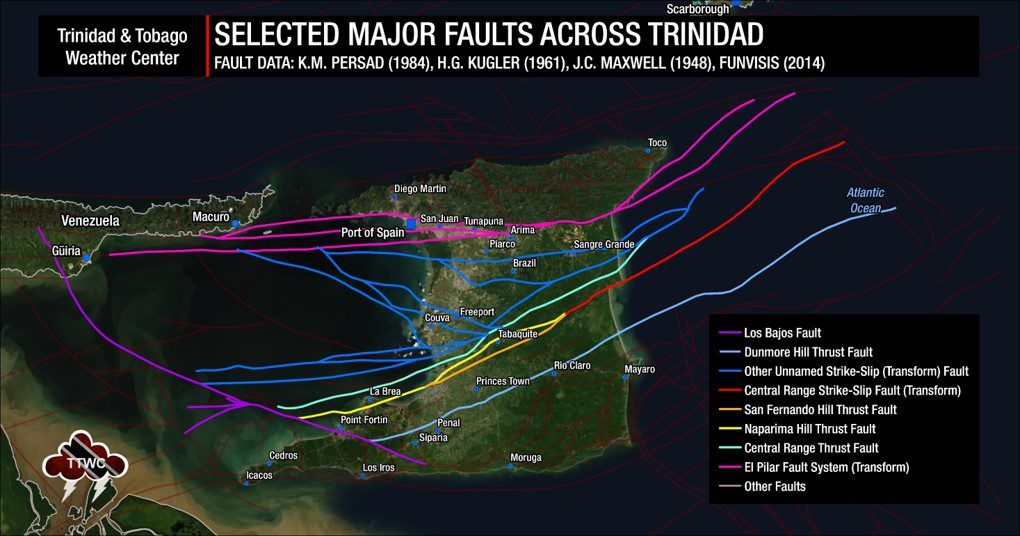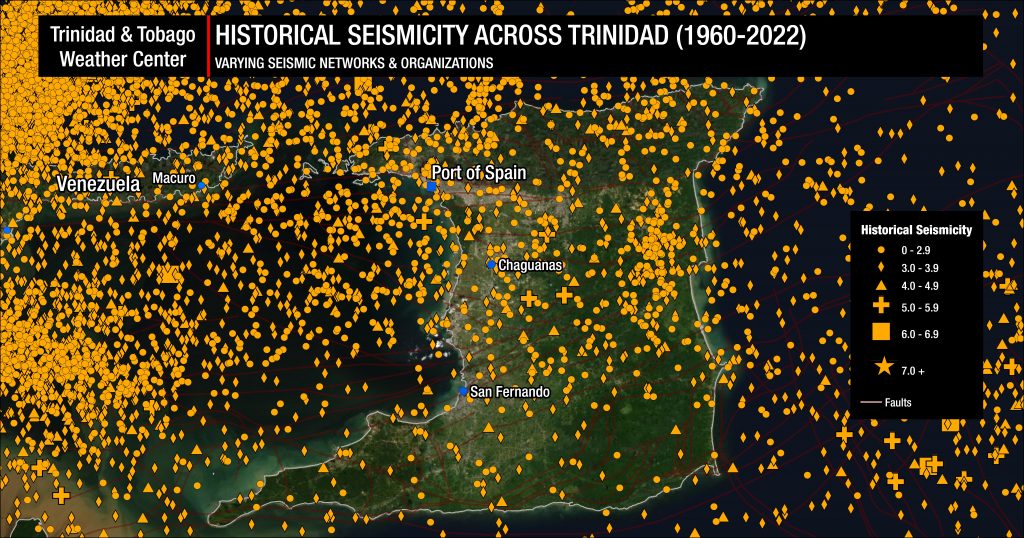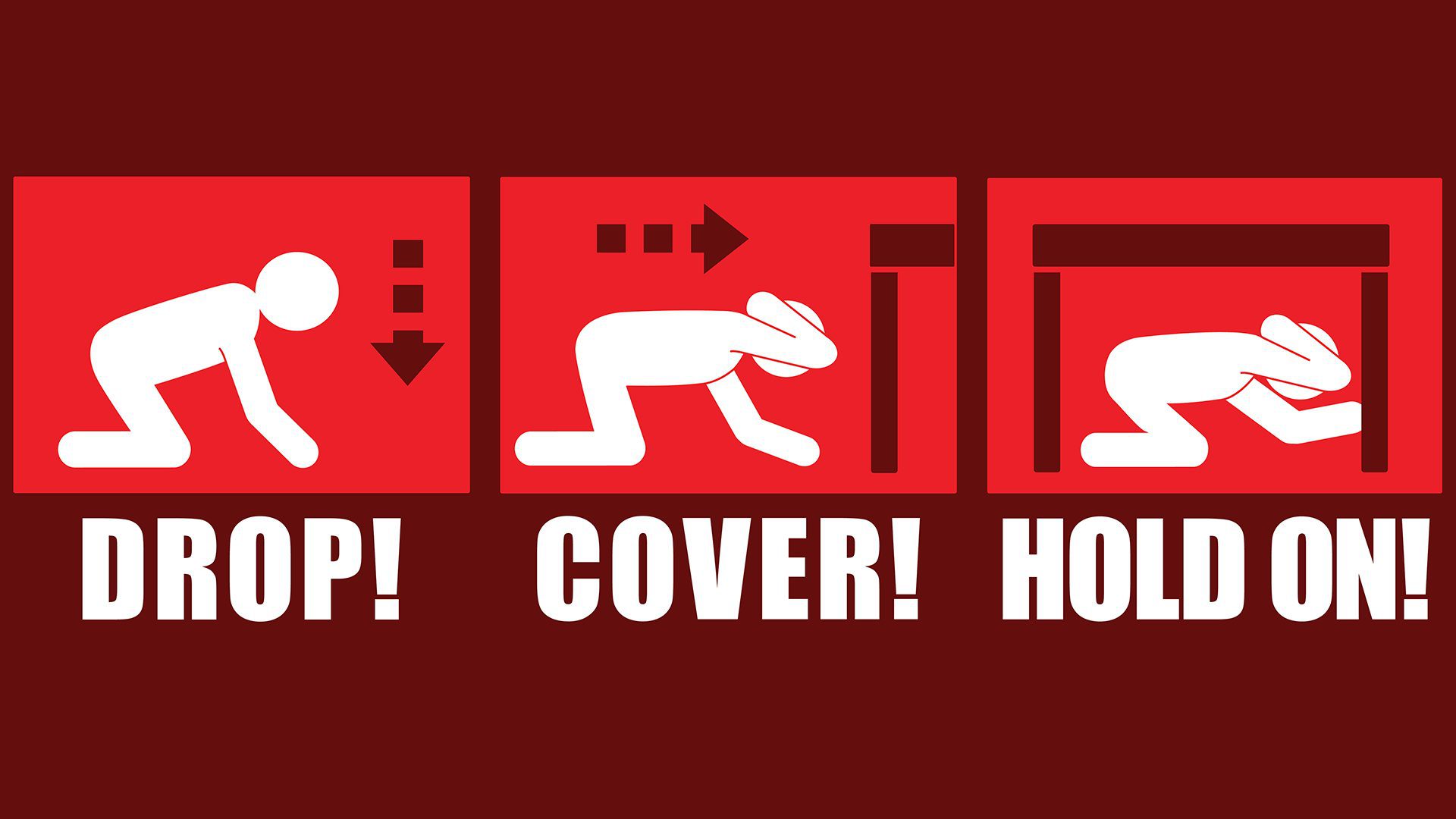The University of the West Indies Seismic Research Centre (UWI SRC) recorded a minor magnitude earthquake on Sunday afternoon on land in northeastern Trinidad. It was first preliminarily located along Trinidad’s north coast in northeastern Trinidad.
The quake, registering a magnitude of 3.8, was felt reported across parts of north-central Trinidad. Based on the revised location from the UWI SRC, the earthquake was approximately 7.4 kilometers northwest of Sangre Grande, 13.4 kilometers east-northeast of Arima, and 20.4 kilometers east-northeast of Piarco, at a depth of 39 kilometers.

The UWI SRC, the authority on seismic and volcanological information in the English-speaking Eastern Caribbean, has reviewed this information.
You can submit felt reports to the University of the West Indies Seismic Research Centre.
There is no tsunami threat.
There are four conditions necessary for an earthquake to cause a tsunami:
- The earthquake must occur beneath the ocean or cause material to slide within or into the ocean.
- The earthquake must be strong, with at least a magnitude of 6.5.
- The earthquake must rupture the Earth’s surface and occur at a shallow depth—less than 70 kilometers below the surface.
- The earthquake must cause vertical movement of the seafloor (up to several meters).
None of these conditions occurred.
Note that different seismic monitoring agencies use different methods, or several methods, for processing quake parameters worldwide. Each method has its limitations and will likely produce different results within the range of the data’s uncertainty. This is generally accepted within the scientific community.
Read More
Earthquake Magnitude & Intensity
Can earthquakes be predicted or forecasted?
On-land Trinidad is a highly faulted area, with several fault systems running across the island – all due to compensation of the lateral movement of the Caribbean and South American plates. Several major fault systems run across, on land, Trinidad, including the El Pilar Fault system, the Central Range Fault, the Northern Range Fault, the Darien Ridge, the Los Bajos Fault, and the Arima Fault. Earthquakes on land across Trinidad are typically less than 50 kilometers.

This typical depth varied slightly due to an earthquake swarm in the Toco area in 2001. Some moderate-magnitude earthquakes have also occurred at a deeper depth.
According to the UWI SRC, since 1980 and before 2004, there have been, on average, 13 events annually, generally of magnitude less than 4.1. There was, however, one event in 1981 with a magnitude of 4.8. Since 2001, there has been an increase in the number of earthquakes recorded, with a sequence occurring in 2004/2005 that generated two events in the magnitude 5.1-5.5 range. Most of the events occur at depths below 20 kilometers.
On December 2nd, 2004, events with magnitudes of 5.5 and 5.1 occurred in the central north-east of Trinidad. The location of these earthquakes and the corresponding focal mechanisms coincide with the Northern Range faults dipping southward, mapped by Algar & Pindell (1993) beneath the Caroni Swamp Area. Fault plane solutions suggest a normal motion with a right-lateral strike-slip component.
This earthquake occurred just south of the El Pilar Fault System, which runs along the foothills of the Northern Range. Within 10 kilometers of Sunday afternoon’s earthquake, over 47 earthquakes were recorded in the area, ranging from magnitudes 2.1 to 4.2, with the 4.2 event occurring on May 20th, 2022.
Can weather (and hot air temperatures) cause earthquakes?
Weather does not affect nor cause seismic events in Trinidad and Tobago. When hot weather occurs, one of the most common comments is that it is “earthquake weather?”
It’s a fairly common misconception whose origins date back to the 4th century B.C. Aristotle proposed that earthquakes were caused by winds trapped in subterranean caves. Small tremors were thought to have been caused by air pushing on the cavern roofs and large ones by the air breaking the surface.
This theory leads to a belief in earthquake weather that because a large amount of air was trapped underground, the weather would be hot and calm before an earthquake. A later theory stated that earthquakes occurred in calm, cloudy conditions and were usually preceded by strong winds, fireballs, and meteors.
There is no such thing as “earthquake weather.” Statistically, there is approximately an equal distribution of earthquakes in cold weather, hot weather, rainy weather, etc.
Very large low-pressure changes associated with major storm systems (typhoons, hurricanes, etc.) are known to trigger episodes of fault slip (slow earthquakes) in the Earth’s crust. They may also trigger some damaging earthquakes. However, the numbers are small and not statistically significant.
Water can remove sediment or infiltrate the ground and increase or decrease the overburden pressures. This change in ground pressure can trigger minor seismic activity. Excessive rainfall, not hot weather, can also contribute to minor seismic activity.
Earthquake weather does not exist, and hot temperatures do not cause earthquakes.
Source: USGS, Dr. Malcom Johnston
Has there been an increase in seismic activity?

Trinidad and Tobago and the surrounding region are very seismically active. Across the Eastern Caribbean, over 2,200 earthquakes are recorded annually. Since 1990, the University of the West Indies Seismic Research Centre has recorded an annual average of 280 earthquakes in the Trinidad and Tobago region (area bounded by 9.5°- 11.5°N & 59.5°W – 63.5°W). Of these 280 quakes, 50 of these seismic events are, on average, above magnitude 3.5.
Most earthquakes occur northwest of Trinidad in an area known as North of the Paria Peninsula, which has the second-highest seismicity in the Eastern Caribbean. According to the UWI SRC, approximately 65 events of magnitude 2.1 and above are located in the area annually.
However, the UWI SRC’s annual report for 2020 to 2021 states that regional seismic and volcanic activity has been elevated for several years.
On average, the Eastern Caribbean has seen a pattern of major (M7.0-M7.9) quakes every 20 to 30 years. That pattern has stayed true. The last major (M7.0-7.9) quake occurred north of Martinique in 2007.
Historical patterns indicate that great quakes (M8.0+) on the Richter Scale have occurred every century in the region. The probability of another event at that level is high since the last >M8.0 earthquake occurred in 1843. While it is impossible to say definitively when the next great quake will occur in the region, the time since the last one is now more than 170 years ago.
It is important to note that seismic activity cannot be predicted—meaning the precise time, date, magnitude, depth, etc., cannot be known ahead of time based on current research and technology.
Now is the time to create or go over your earthquake preparedness plan and know what to do during, before, and after an earthquake.













